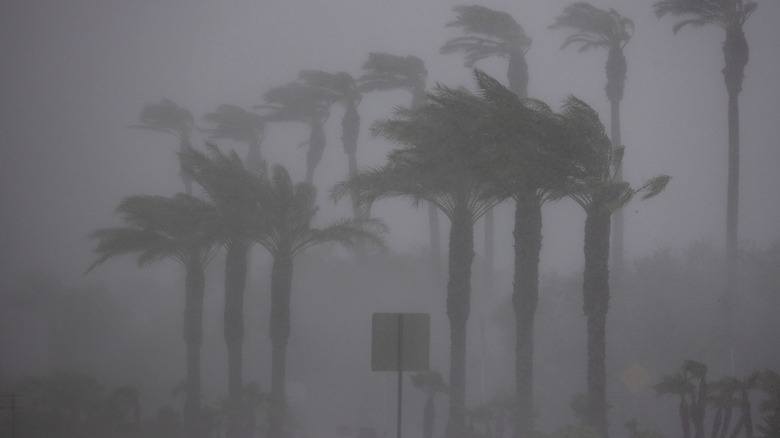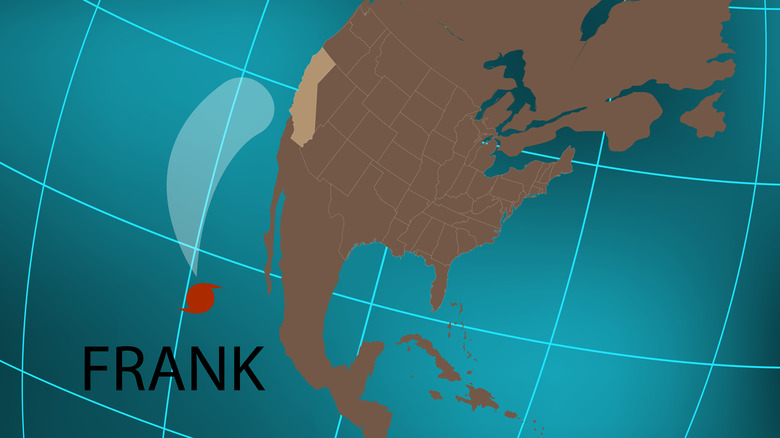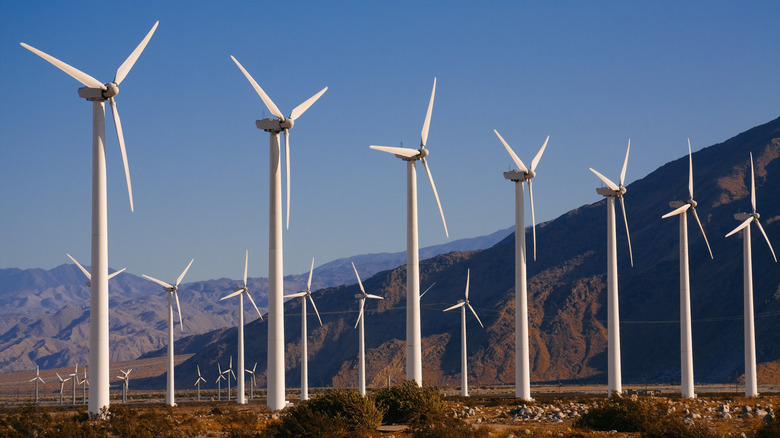The Real Reason Hurricanes Are Rare In California
In the annals of recorded history, California has only ever been hit by one real hurricane — way back in 1858. Every other major cyclone event has either not made it to the coast or has lost so much momentum it was reduced to the level of an ordinary tropical storm by the time it hit the Golden State.
If you count these smaller storms that began as hurricanes, California has had a few nasty ones, but not many. Without question the worst storm to hit California in the 20th century was El Cordonazo in 1939, the last tropical storm to actually make landfall. The shock weather event killed nearly 100 people and caused the equivalent of $44 million dollars worth of damage in today's money. Many of the victims were people trapped on small boats out to sea, while others were badly impacted by flash flooding — something California was totally unprepared for. Most other harsh tropical storms have simply lashed the coast with fearsome winds, with no particularly noteworthy consequences.
Given California's reputation for blue skies, the presence of storm Hilary in 2023 was a pretty unusual event — though she too began as a hurricane that only actually made landfall just south of the border in Mexico and weakened to become a tropical storm. Thanks to the state's fortuitous geography, hurricanes in California are rarely even possible — although they could become more common thanks to climate change.
Ice cool Cali
Unlike the unfortunate souls trapped in Florida, the people of California have some really solid protection on their side against roving hurricanes, making the likelihood of one ever hitting land pretty remote. Firstly, hurricanes only form over particularly warm waters, and the sea must reach a bath-like 79 degrees Fahrenheit in order for a hurricane to gain momentum (via Climate.gov). The ocean off the coast of California is much too cold to create such a cyclone, as the state receives some pretty frosty water traveling south from Alaska. Pacific hurricanes tend to develop pretty far to the south, gaining great energy over tropical and subtropical waters. As such, storms headed north to the U.S. are usually doomed to lose most of their momentum as they travel.
According to Hurricanes: Science and Society, the one real hurricane to hit California — the San Diego Hurricane of 1858 — is believed to have occurred in an El Niño year, a period when seas experience unseasonable warming. The year 2023 was also an El Niño year — which goes some way toward explaining the ferocity of Tropical Storm Hilary. Unfortunately, climate change will inevitably make tropical storms more likely and hurricanes more powerful as the average temperature of the oceans continues to rise year after year.
Favorable winds
Even with the dangers posed by climate change, California is usually protected from hurricanes by its regular trade winds. Most of the time, California is blessed with a northeast wind, which blows in a westerly direction, pushing deadly cyclones away from its sunny shores. Those living on the East Coast of the U.S. on the other hand suffer the reverse — trade winds moving west from Africa ensure residents are constantly battered by terrifying weather events. During Tropical Storm Hilary, high pressure in central U.S. states and low pressure off the west coast affected the normal wind patterns across California, allowing the terrible storm to hit closer to home.
Finally, California is affected by a phenomenon known as atmospheric subsidence. This happens when an area of high pressure causes a downward airflow to develop, with winds rushing toward the area of lower pressure. The sinking air creates cooler conditions closer to ground level and has the fortunate side effect of crushing developing storms.


